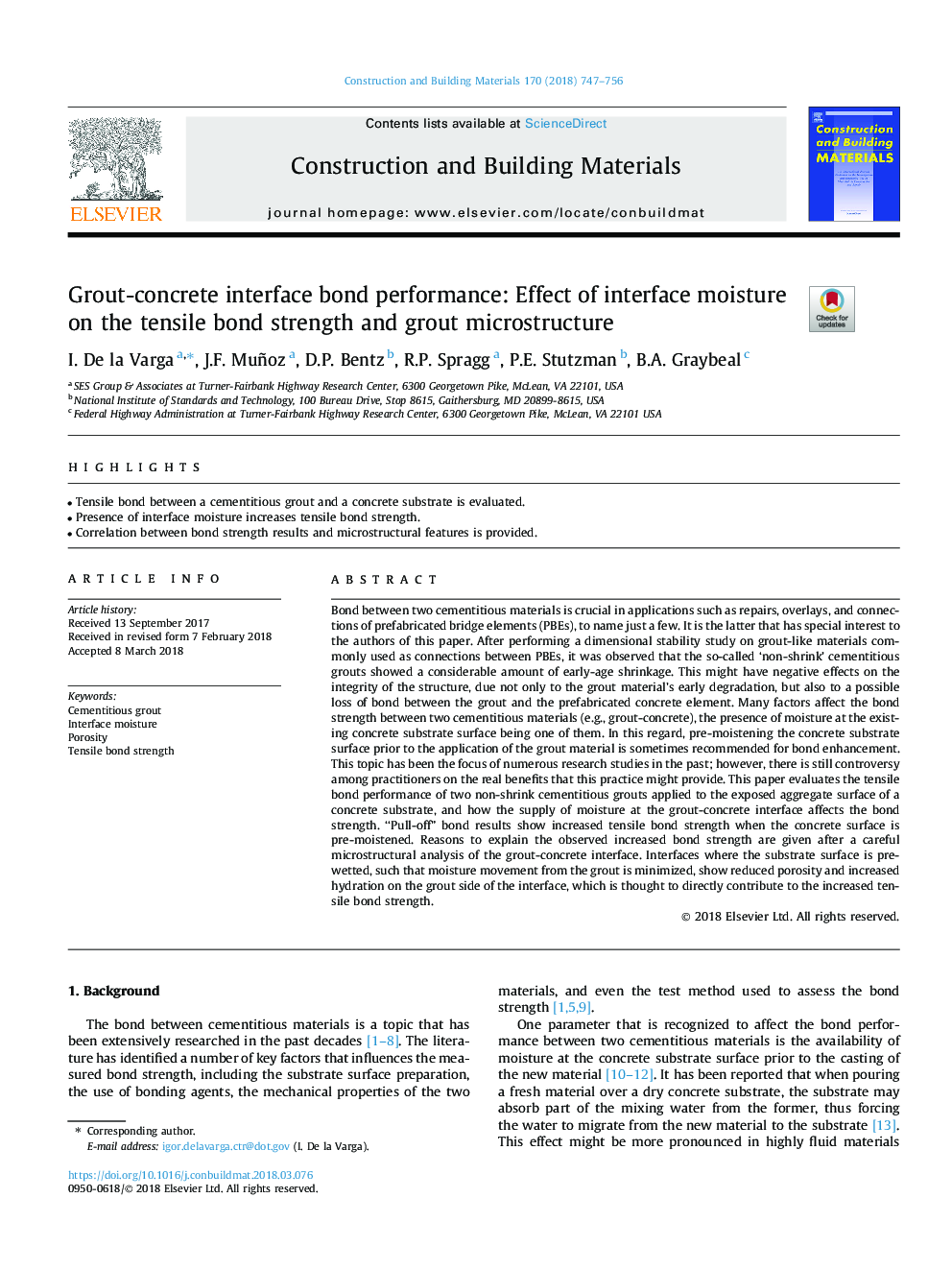| کد مقاله | کد نشریه | سال انتشار | مقاله انگلیسی | نسخه تمام متن |
|---|---|---|---|---|
| 6714329 | 1428736 | 2018 | 10 صفحه PDF | دانلود رایگان |
عنوان انگلیسی مقاله ISI
Grout-concrete interface bond performance: Effect of interface moisture on the tensile bond strength and grout microstructure
ترجمه فارسی عنوان
عملکرد باند رابط بتن مسلح: اثر رطوبت رابط بر استحکام باند کششی و ریزساختار غشایی
دانلود مقاله + سفارش ترجمه
دانلود مقاله ISI انگلیسی
رایگان برای ایرانیان
کلمات کلیدی
سیمان سیمان، رطوبت رابط، قطر بینی، استحکام باند کششی،
موضوعات مرتبط
مهندسی و علوم پایه
سایر رشته های مهندسی
مهندسی عمران و سازه
چکیده انگلیسی
Bond between two cementitious materials is crucial in applications such as repairs, overlays, and connections of prefabricated bridge elements (PBEs), to name just a few. It is the latter that has special interest to the authors of this paper. After performing a dimensional stability study on grout-like materials commonly used as connections between PBEs, it was observed that the so-called 'non-shrink' cementitious grouts showed a considerable amount of early-age shrinkage. This might have negative effects on the integrity of the structure, due not only to the grout material's early degradation, but also to a possible loss of bond between the grout and the prefabricated concrete element. Many factors affect the bond strength between two cementitious materials (e.g., grout-concrete), the presence of moisture at the existing concrete substrate surface being one of them. In this regard, pre-moistening the concrete substrate surface prior to the application of the grout material is sometimes recommended for bond enhancement. This topic has been the focus of numerous research studies in the past; however, there is still controversy among practitioners on the real benefits that this practice might provide. This paper evaluates the tensile bond performance of two non-shrink cementitious grouts applied to the exposed aggregate surface of a concrete substrate, and how the supply of moisture at the grout-concrete interface affects the bond strength. “Pull-off” bond results show increased tensile bond strength when the concrete surface is pre-moistened. Reasons to explain the observed increased bond strength are given after a careful microstructural analysis of the grout-concrete interface. Interfaces where the substrate surface is pre-wetted, such that moisture movement from the grout is minimized, show reduced porosity and increased hydration on the grout side of the interface, which is thought to directly contribute to the increased tensile bond strength.
ناشر
Database: Elsevier - ScienceDirect (ساینس دایرکت)
Journal: Construction and Building Materials - Volume 170, 10 May 2018, Pages 747-756
Journal: Construction and Building Materials - Volume 170, 10 May 2018, Pages 747-756
نویسندگان
I. De la Varga, J.F. Muñoz, D.P. Bentz, R.P. Spragg, P.E. Stutzman, B.A. Graybeal,
